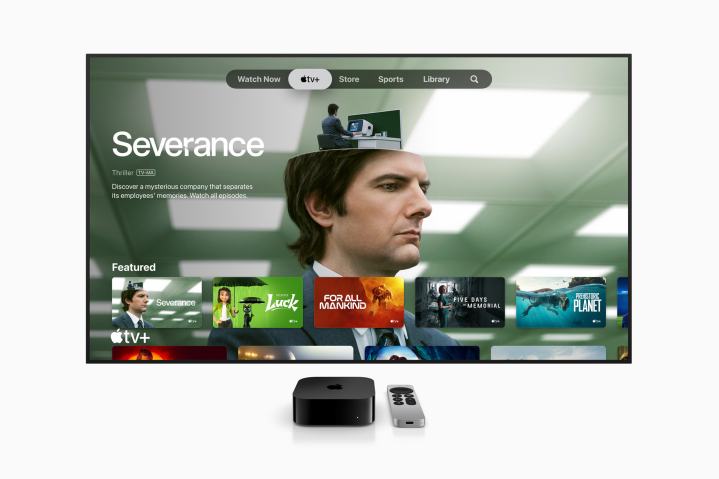Apple today announced a new version of Apple TV 4K. It’s the third generation of what we consider to be the best streaming device you can buy, and Apple’s not really messing with things too much. Same general design. Same general function. But the internals have been tweaked that allow this 2022 model (which follows the models released in September 2017 and May 2021) to work better with more TVs — and to allow for a little more flexibility in price.

Here are the big deals: There are now two versions of Apple TV 4K (or SKUs, for those of you who prefer inside-baseball terms). There’s a model that’s Wi-Fi only with 64GB of storage for $130, or a model with Wi-Fi and Ethernet with 128GB of storage for $150. For our money, we’d just go ahead and spend the extra $20.
Also of note: The new prices mean there’s no room for a $150 Apple TV HD, which was limited to 1080p resolution, and it’s been discontinued.
More on Apple TV
Then there’s the addition of HDR10+. While that really just sounds like a checkbox on a feature list, it’s actually a low-key big deal. Here’s the line from Apple’s press release: “HDR10+ support joins Dolby Vision on Apple TV 4K, so users can watch their favorite movies and TV shows in the best quality possible across more TVs.”
“Across more TVs” really means Samsung TVs, which support HDR10+ but not Dolby Vision, which is the other major HDR standard. (And which Apple TV 4K has supported from the jump.)
As you’d also expect with this sort of refresh, the processor has been improved, too. Apple’s A15 Bionic now powers Apple TV 4K, just as it does the iPhone 14 and iPhone 13 lines. (Along with a couple of other devices.) Apple says it’s “up to 50 percent faster than the previous generation, delivering greater responsiveness, faster navigation, and snappier UI animations.” It also says that graphics performance “is now up to 30 percent faster.” That last part is important if you play a lot of games on your Apple TV. The first part likely isn’t something you’ll notice. But regardless, that all means a longer overall lifespan for a product that absolutely should last a number of years before needing to be replaced just to keep up with the hardware-software requirements.
The new Apple TV 4K also continues to serve as a smart home hub, with the Thread networking standard on board, as well as support for the new Matter standard. You’ll need the model with Ethernet for all that, though.
Both models of the new Apple TV 4K are and will be available on November 4 in more than 30 countries.



